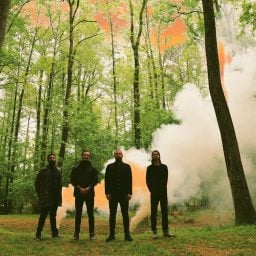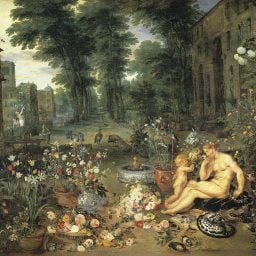Die-hard fans of cult Icelandic band Sigur Rós and its lead singer Jon Por “Jónsi” Birgisson are in for a double shot of good news. For those who did not already know, the band leader is also a visual artist, and he has just unveiled his second solo show at Tanya Bonakdar Gallery in West Chelsea. (Jónsi’s first show took place at Bonakdar’s Los Angeles space in 2019.)
The show, titled “Obsidian,” coincides with Jónsi’s third solo music album, under the same name. Both the exhibition and the new album center on the natural wonder of Jónsi’s native Iceland.
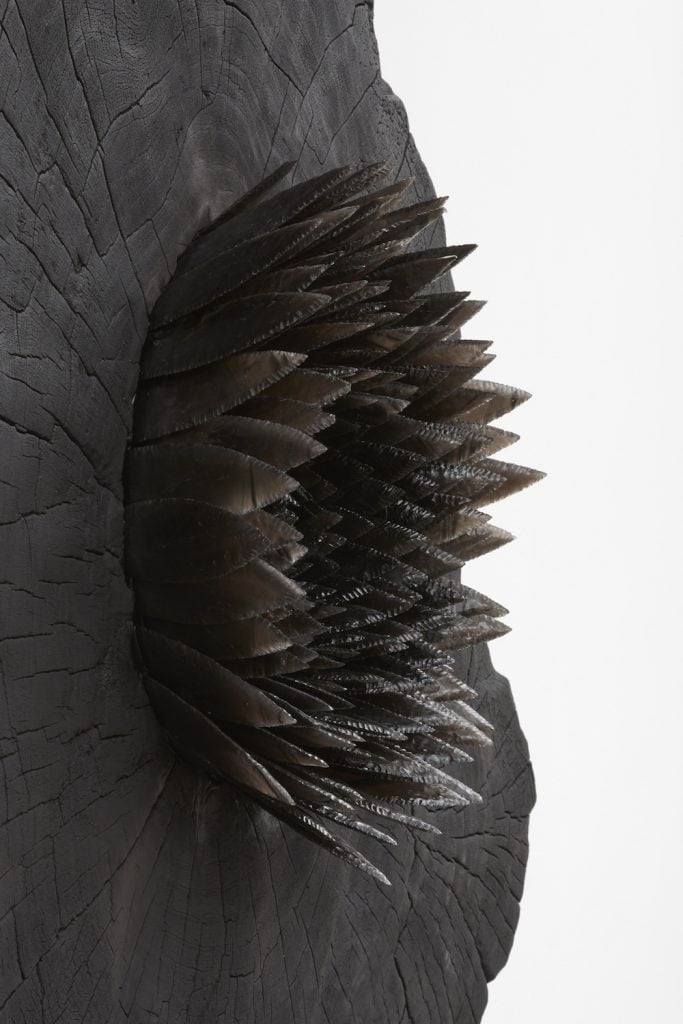
Detail of Hrafntinnublómstur (Obsidian bloom) 2 (2021) by Jónsi. Image courtesy of the artist and Tanya Bonakdar Gallery. Photo by Pierre Le Hors.
When the Fagradalsfjall volcano erupted this March, after lying dormant for almost 800 years, Jónsi, who is based in Los Angeles, was unable to travel back to Iceland to see it in person. Instead, he conjured up the experience by creating two new major sound installations and a series of sculptural works. In addition to music, there are also soundscapes of rumbling rocks and searing lava, and the artist has created earthy, invigorating scents that waft through the gallery, with the use a “perfume organ.” Given all this, the show is unsurprisingly fantastically trippy, compelling and—we’ll just say it—immersive.
On the ground floor, visitors pass through a curtain into a pitch-black room. When your eyes adjust, they settle on a glowing, mesmerizing sphere on the ceiling that immediately sparks connections to the light and space artist James Turrell’s Roden Crater. A circular black sphere that sits directly underneath is surrounded by a curving wall of 200 speakers stacked on the floor. Step inside, and you are enveloped by the musician’s ethereal music, which is both emotional and soothing.
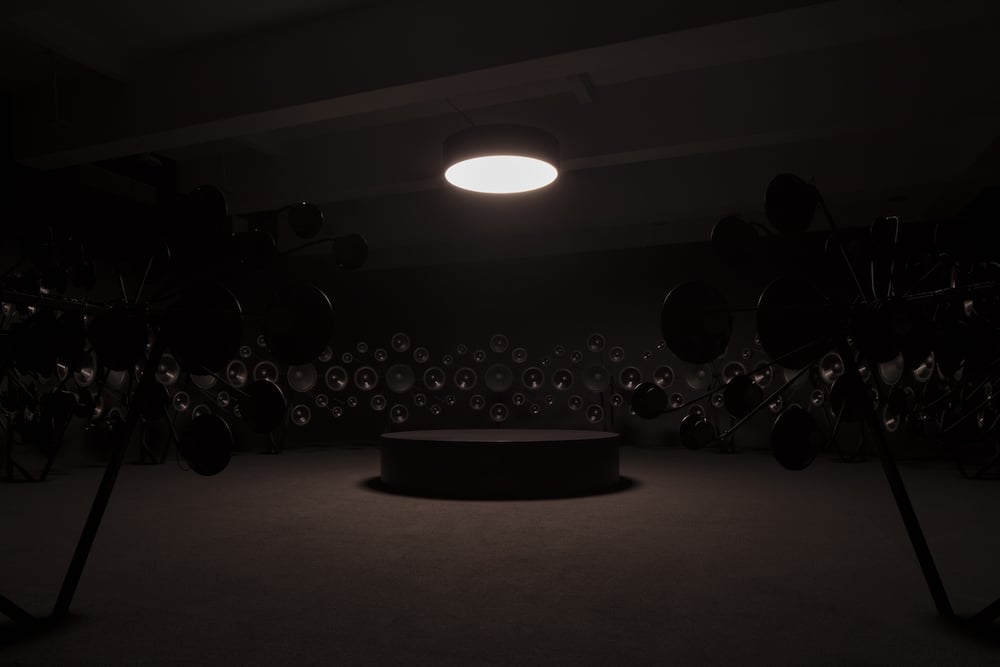
Jónsi, Hrafntinna (Obsidian) (2021). Image courtesy of the artist and Tanya Bonakdar Gallery. Photo by Pierre Le Hors.
According to the gallery, the piece is inspired by Icelandic choir performances and the music, written by Jónsi, is his own choral hymn in four parts. Smoky aromas of fossilized amber, said to be the only essential oil in existence that is mined as opposed to harvested, drift through the room. The ultimately aim is to make the viewer feel as though they are inside a cavernous volcano, looking up towards the light, according to the gallery.
On the second floor, the exhibition is divided into two sections. In one room, sculptural wall-hangings made of resin and obsidian glass invite careful inspection while the viewer begins to realize a crackling background noise that mimics the sounds of a volcanic eruption.
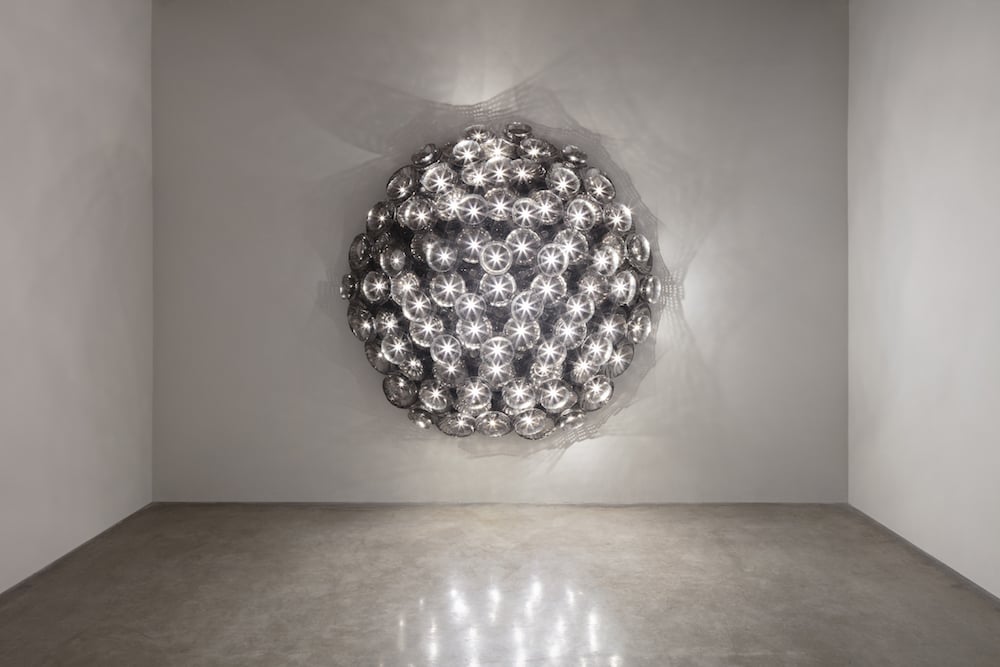
Jónsi, Sólgos (Solar Flare) (2021). Image courtesy the artist and Tanya Bonakdar Gallery. Photo by Pierre Le Hors.
Another sound and light installation—arguably even more intense than the ground floor work—is accessed by walking through another dark, black-out curtain. A large convex wall sculpture made from flower-shaped metallic discs and equipped with LEDs, pulsates with short bursts of light and sound before building up in a crescendo of rapid-fire strobe effects. Visitors are encouraged to don sunglasses (provided at the entrance to the work) and to stay inside for no longer than ten minutes. In this room, Jónsi has infused the space with the scent of ozone, which is said to also engage photoreceptors inside the brain.
The gallery notes that the works present “an alchemical mix of imagery, sensations, and emotions borne within the mind-body of his viewers.” For the music fans, the new Obsidian album, which was recorded and produced in tandem with the works on the view, contains ten tracks that similarly reference sights, textures, and aromas of Iceland’s ashen terrain.
“It is extraordinary to be working with an artist of Jónsi’s stature,” Tanya Bonakdar told Artnet News, “who not only addresses the impactful role that sound plays in how we connect with our surroundings, but whose work also pushes the boundaries of experience in surprising and meaningful ways.”






